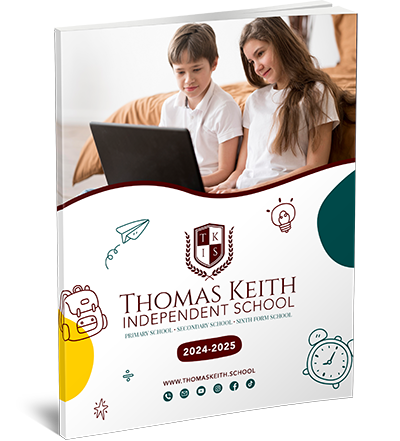Semicolon In KS2
Understanding how to use the semicolon in KS2 is a valuable part of developing strong writing skills. The semicolon is a punctuation mark that helps connect closely related ideas and create well-structured sentences. For students in Key Stage 2, learning how and when to use a semicolon not only improves grammar but also enhances the clarity and flow of their writing. This article explains the use of semicolons, provides practical examples, and highlights how Thomas Keith Online Independent School supports students in mastering this important punctuation mark.
What Is a Semicolon?
A semicolon (;) is used to link independent clauses—complete sentences that could stand on their own but are closely related in meaning. It creates a pause that is stronger than a comma but not as final as a full stop. Using semicolons correctly allows writers to connect ideas smoothly and avoid choppy or repetitive sentence structures.
When to Use a Semicolon
1. Linking Two Related Independent Clauses
Semicolons are used to join two independent clauses that are closely connected in theme or idea. These clauses could be separated by a full stop, but using a semicolon shows a stronger connection between the ideas.
-
Example: I wanted to finish my homework; I was too tired to concentrate.
This sentence contains two complete thoughts, and the semicolon helps link them without using a conjunction like “and” or “but.”
2. Separating Items in a Complex List
When the items in a list contain commas themselves, semicolons are used to separate them. This prevents confusion and helps the reader distinguish between each item.
-
Example: The meeting included James, the project manager; Sarah, the team leader; and Tom, the financial advisor.
Without semicolons, the sentence would be difficult to follow due to the multiple commas.
3. Before Transitional Words or Phrases
Semicolons are used before transitional phrases such as however, therefore, moreover, and nevertheless when connecting two independent clauses.
-
Example: The rain was heavy; therefore, the event was cancelled.
The semicolon helps smoothly introduce the transitional word and link the clauses in a formal, polished way.
Teaching the Semicolon In KS2
At Thomas Keith Online Independent School, lessons on grammar, including the semicolon in KS2, are delivered in a structured and engaging way. The school uses a blend of instructional strategies to help students fully understand when and how to use semicolons. Here’s how they do it:
-
Practice Exercises: Students are given specific tasks where they identify semicolons, insert them into appropriate places, and revise sentences that require punctuation improvements.
-
Live Feedback: Teachers provide real-time corrections and explanations, helping students understand why a semicolon is (or isn’t) appropriate in a given sentence.
-
Creative Writing Assignments: Through stories, descriptive writing, and essays, students are challenged to apply their knowledge of semicolons in real writing situations, reinforcing the concept with hands-on practice.
This consistent, interactive approach helps students gain both confidence and accuracy in their punctuation skills.
![]()
FAQs
Q1: Can I use a semicolon instead of a comma?
A: No. Semicolons are used to link related independent clauses or separate items in complex lists, not for general pauses. Commas are better suited for separating phrases or introductory elements.
Q2: What happens if I misuse a semicolon?
A: Using a semicolon incorrectly can confuse readers or make a sentence grammatically incorrect. However, with practice and feedback, students can quickly learn the proper usage.
Q3: Are semicolons optional in writing?
A: In some cases, yes. For example, you can use a full stop instead of a semicolon to separate related ideas. But semicolons can improve sentence variety and enhance writing style when used properly.
Conclusion
Mastering the semicolon in KS2 gives students the tools to write more clearly and cohesively. This punctuation mark allows young writers to express connected ideas without relying on repetitive conjunctions or short sentences. Through supportive and interactive lessons at Thomas Keith Online Independent School, students learn to use semicolons with confidence and purpose.
To help your child strengthen their punctuation skills, consider using structured grammar programs or enrolling them in an online learning platform like Thomas Keith Online Independent School, where essential skills like semicolon use are taught in a fun, accessible way. Start today and give your child the confidence to write with clarity and control.




